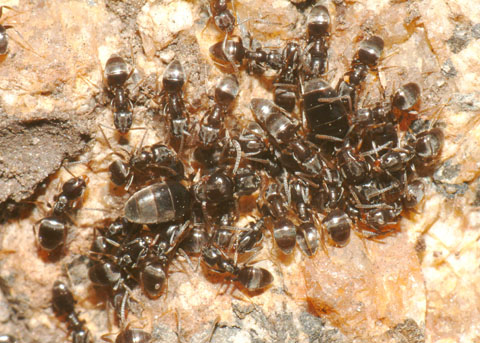Not that I wish to post only about this, but if you can find springtails to culture or for a one shot use, they will consume the decomposing, mold growing leftovers. Just syringe a bunch into the nest opening and they will find their way to the decomposing food. The are great "janitors" to have around to avoid mold in nests like these.
Springtails and other isopods are found in the thousands within a square foot in the wild, and are thus awesome consumers of decomposing material. This is probably a major reason why you don't see decaying material in wild nests often, it simply won't last too long.
Also pinning the food to something (clay ball, cork) with an insect or sewing pin will decrease their ability to bring it into the nest in the future.
Edited by JakobS, July 22 2015 - 12:04 PM.



























